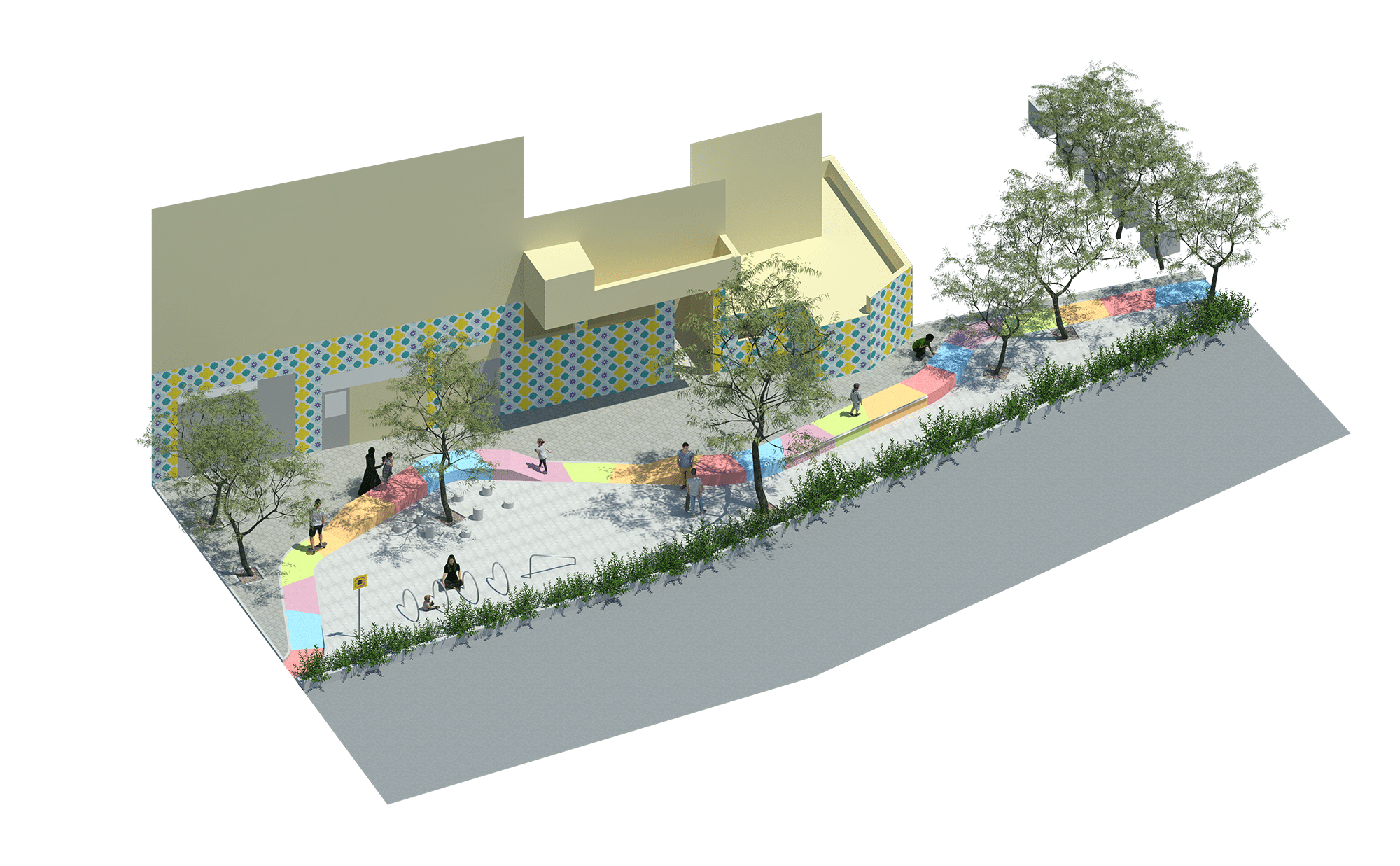BOUDAY CHILD FRIENDLY SPACE
Baalbek, Lebanon
2018
470 m²
125
Partners: War Child Holland Lebanon, The Lebanese Organization for Studies and Training
Volunteers: Vanessa Chemaly; Roxy Bugler; Stephanie Abou-Chakra; Gabriella Condo’; Yasmina Yehia; Alessandra Bertini; Patrick Wundke
Bouday Child Friendly Space (CFS) is a project implemented as part of the Time To Be a Child (TTBAC) and Can’t Wait To Learn (CWTL) programs. A CFS is defined as a ‘safe place where children can come together to play, relax, express themselves, feel supported and learn skills to deal with the challenges they face’ (Save the Children, 2018). The Bouday CFS project sought to realise this by rehabilitating an existing building and its surrounding, transforming it into an innovative space for children.
Our strategy for this project focused on improving the existing infrastructures, as opposed to building new temporary facilities for refugee children. This approach both addresses the infrastructural issues generated by the high influx of Syrian refugees, as well as contributing to local development for the host population. The strategy is thus more successful both socially and financially.
Before we carried out the intervention, the indoor spaces – initially set up as garages – were being used for storage. The outdoor spaces were mostly used as a car park, making it unsafe for children to use, learn or play in. The rehabilitation of these areas created a CFS where children could learn and play, contributing to both improved resilience and mental health.

The indoor CFS was designed to be adaptable, joyful, functional and stimulating. This design was informed by extensive research on the type of psychosocial activities that could be run in this space, and by learning from our partners how they’d like to use this space for their activities. This space thus provided a direct response to the practical needs of vulnerable children, as well as suggesting potential ways design could be used to optimise existing psychosocial programs.
The outdoor CFS was designed as a playground which would allow for physical, educational, relaxing and imaginative activities. The space included active games such as climbing and jumping, role-play games such as playhouse and exploration spaces. The ideas for these playgrounds had come from participatory assessments with children and teachers.
In line with our values, this project was implemented with the local community. The construction process took four weeks to complete and it was carried out by a team of 26 local women and men, 8 national and international volunteers together with our team.

